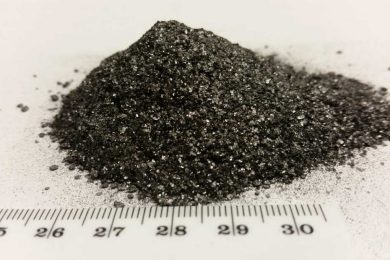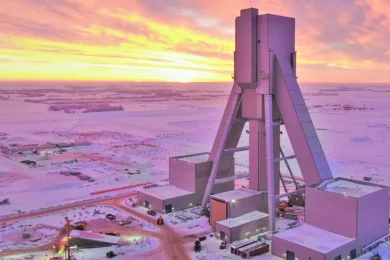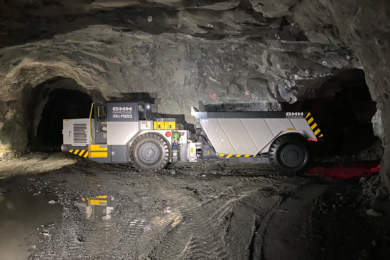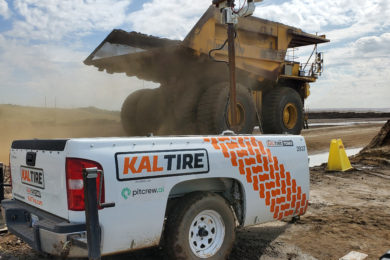Roskill reports that Australian Triton Minerals has completed a DFS for its Ancuabe graphite project in Cabo Delgado, Mozambique. The project is planned to include a 60,000 t/y processing plant and could operate for 27 years. Construction could begin in the first half of 2018 with production of concentrate by the second half of 2019, subject to approvals by the Mozambique Government. It aims to produce high-grade concentrate for supply to lithium-ion battery and expandable graphite markets. Operating costs are estimated to be $634/t. A JORC ore reserve figure was also released as part of the study for 24.9Mt @ 6.2% TGC.
The picture shows a sample of graphite concentrate from Ancuabe at 98% TGC
Roskill view: “Mozambique has become the focus of recent graphite developments. In November, another Australian company, Syrah Resources, began production of flake concentrate in Cabo Delgado at its Balama project. The project could ramp up to become the largest graphite mine in the world with a nameplate capacity of 350,000 t/y. Syrah Resources plans to produce 160-180,000 t of graphite in 2018 and could increase production to 250-300,000 t/y the following year.
“GK Ancuabe began mining from a relatively small project in Cabo Delgado in June 2017 and has plans to ramp up to 9,000 t/y of capacity. The company is a subsidiary of the German graphite producer AMG Graphit Kropfmuehl, which has a number of graphite mines and plants around the world.
“Several other companies continue to develop graphite projects in Mozambique. These include Battery Minerals, which completed a DFS on its Montepuez Central project in February 2017 and a value engineering study in October, and has plans to produce 45-50,000 t/y of concentrate. Battery Minerals is also developing the Balama Central project, while Triton Minerals has a second graphite project at Nicanda Hill.”










